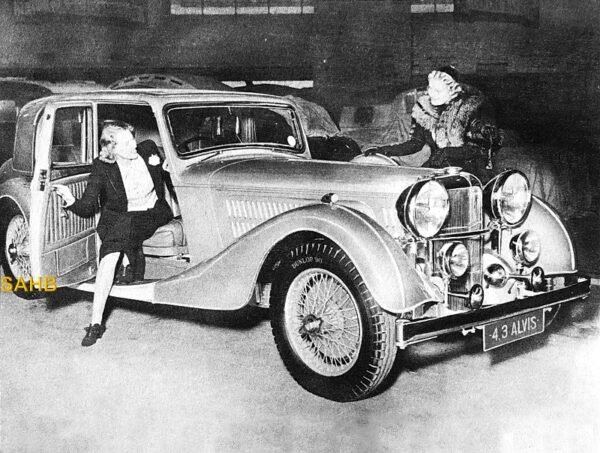
This Snapshot was taken at the 1937 London Motor Show, but by the Stuttgart-based German weekly motoring magazine Neue Kraftfahrer Zeitung. They were impressed enough with the car to place the image on the front cover of their 4 November 1937 issue.
The 4.3-litre and its sister model the Speed 25 were announced in August 1936. Both old and new models were straight sixes, but the Speed 20 had only four main bearings, despite an increase in capacity from 2,511cc in 1931 to 2,762cc in 1935. In October 1935 the range had been complemented by the 3½-litre with 3,571 cc, but still with only four main bearings.
For the next increase in engine size the 3½-litre Speed 25 and the 4.3-litre gained seven main bearings.
The 4.3-litre and Speed 25 are arguably some of the finest cars produced in the 1930s. Both cars inherited the all-synchromesh gearbox introduced in 1933 on the SB Speed 20, the first gearbox in the world with synchromesh on all four gears, and the independent front suspension introduced on the Speed 20 in that same year.
The 4.3-litre added further refinements: the clutch, flywheel and crankshaft were balanced together to minimise vibration. Two electric petrol pumps fed the three SU carburettors. A new induction system provided greater silence.
As befitted such patrician machines, Alvis did not make any coachwork for the 4.3-litre or the Speed 25. The chassis were bodied by such companies as Cross & Ellis (standard tourer) Charlesworth (standard saloon and Drop Head Coupé) as well as Vanden Plas, Lancefield and Offord.
Some enhancements were made up to the end of production in 1940. Later models featured increased chassis boxing, and to reduce the car’s weight Alvis cut several holes in the chassis box sections. Improvements announced at the October 1938 London Motor Show included a dual exhaust system to quieten the engine and improve power output. In the same year, chassis for bespoke coachbuilding were supplemented by a range of standard coachwork. The rake of both the driver’s seat and its squab were now easily adjustable. There was a system of no-draught ventilation. The double sliding roof could be opened from either back or front seat. There were twin tuned electric horns and twin electric windscreen wipers. The instrument panel included a tachometer and there were ashtrays and a smoker’s companion. But the most amazing refinement (?) was a luggage locker lined in white rubber.
Image courtesy of The Richard Roberts Archive: www.richardrobertsarchive.org.uk







Leave a Comment